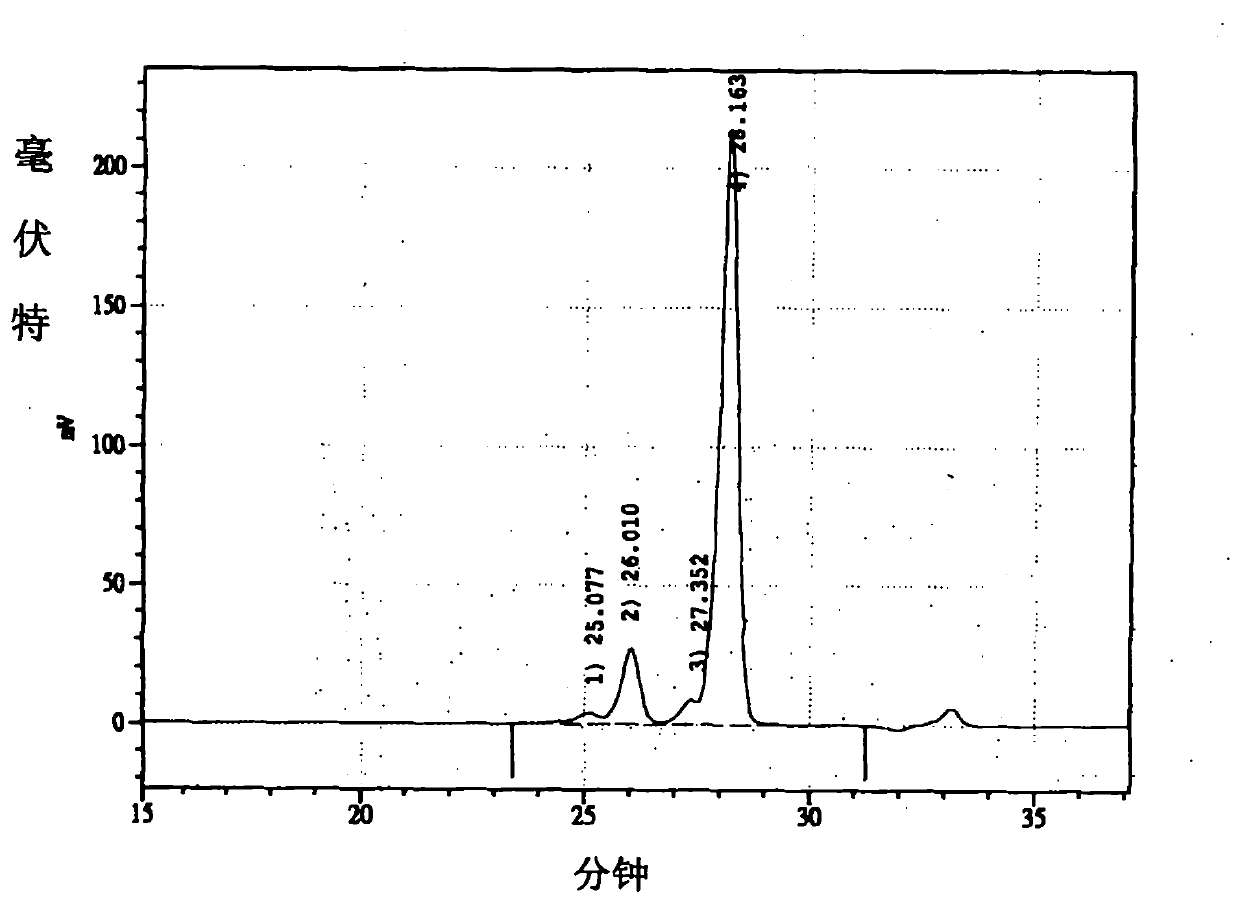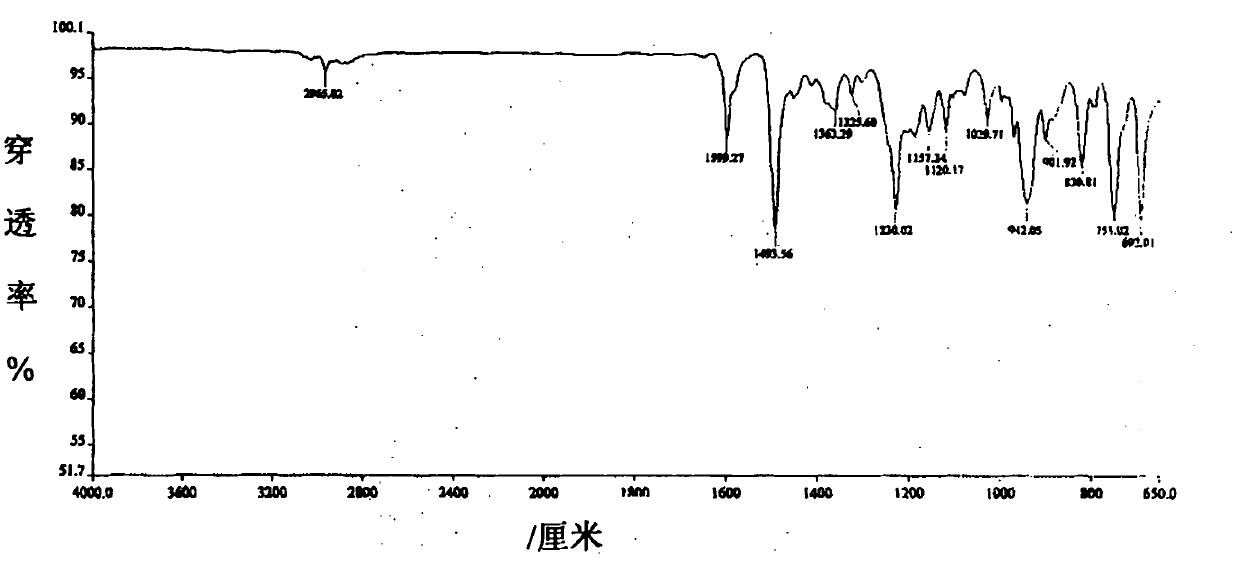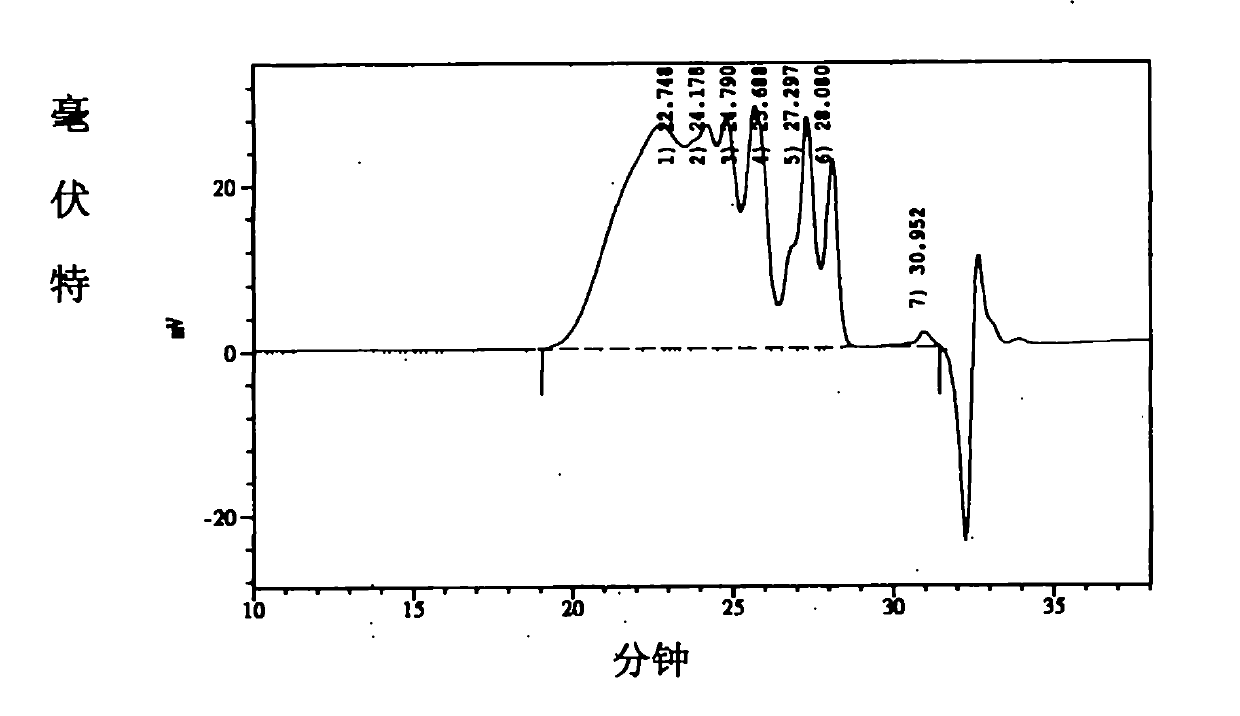Steady state solution of polymer prepared from nitrogen-oxygen heterocyclic compound, preparation method, and use thereof
A nitrogen-oxygen heterocycle, steady-state solution technology, applied in the field of polymer steady-state solution, can solve problems such as inability to effectively control the molecular weight of polymers, limited application scope, and reduced commercial value of the final product.
- Summary
- Abstract
- Description
- Claims
- Application Information
AI Technical Summary
Problems solved by technology
Method used
Image
Examples
Embodiment 1
[0077] [Example 1: Preparation of a steady-state solution of a polymer obtained from the nitrogen-oxygen heterocyclic compound 1]
[0078] Add 450 grams of nitrogen-oxygen heterocyclic compound 1 and 115 grams of cyclohexanone into a 1-liter four-necked reaction flask equipped with a heating device, a thermometer, a stirrer, a cooling pipe, a dropping device and a decompression recovery device In the process, under the condition of stirring, heat to 70°C and maintain at 70°C until the nitrogen-oxygen heterocyclic compound 1 is completely dissolved to form the solution 1 to be polymerized. The gel time at 200°C measured by the aforementioned measurement method (B) is about 633 seconds, and measure its GPC spectrum with the gel permeation chromatography (gel permeation chromatography, GPC) of JASCO company, the result is as follows Figure 1A shown; and further measure the infrared spectrum of the gelled nitroxide 1 with the Fourier transform infrared spectrometer of PerkinElmer ...
Embodiment 2
[0084] [Example 2: Influence of the first solvent type]
[0085] Prepare solution 1' to be polymerized in the same manner as in Example 1, and carry out ring-opening polymerization in the temperature control mode shown in Table 2 to prepare steady-state solution 1', except that 115 grams of N,N-dimethyl Formamide was substituted for cyclohexanone to prepare Polymerization Solution 1'.
[0086] Table 2
[0087]
[0088] It can be seen from Table 2 that the stable solution of the present invention can control the gel time of the finished product by selecting the reaction temperature and controlling the reaction time, which also exists when other solvents are used.
Embodiment 3
[0089] [Example 3: Influence of the type of nitrogen-oxygen heterocyclic compound]
[0090] 1293 grams of nitrogen-oxygen heterocyclic compound 2 and 322 grams of N,N-dimethylformamide were added to Yu-1 equipped with heating device, thermometer, stirrer, cooling pipe, dripping device and decompression recovery device. In a four-necked reaction flask of 1 liter, under the condition of stirring, it is heated until the nitrogen-oxygen heterocyclic compound 2 is completely dissolved to form the solution 2 to be polymerized, and the gel time at 200°C is measured by the aforementioned measurement method (B). is about 551 seconds.
[0091] Subsequently, the solution 2 to be polymerized was subjected to a ring-opening polymerization reaction in a staged temperature-controlled manner as shown in Table 3. When the reaction time reaches 260 minutes, add acetone (about 540 grams) at 25° C., make the temperature rapidly drop to about 78° C., then cool to normal temperature to terminate t...
PUM
| Property | Measurement | Unit |
|---|---|---|
| boiling point | aaaaa | aaaaa |
| boiling point | aaaaa | aaaaa |
| softening point | aaaaa | aaaaa |
Abstract
Description
Claims
Application Information
 Login to View More
Login to View More - R&D Engineer
- R&D Manager
- IP Professional
- Industry Leading Data Capabilities
- Powerful AI technology
- Patent DNA Extraction
Browse by: Latest US Patents, China's latest patents, Technical Efficacy Thesaurus, Application Domain, Technology Topic, Popular Technical Reports.
© 2024 PatSnap. All rights reserved.Legal|Privacy policy|Modern Slavery Act Transparency Statement|Sitemap|About US| Contact US: help@patsnap.com










